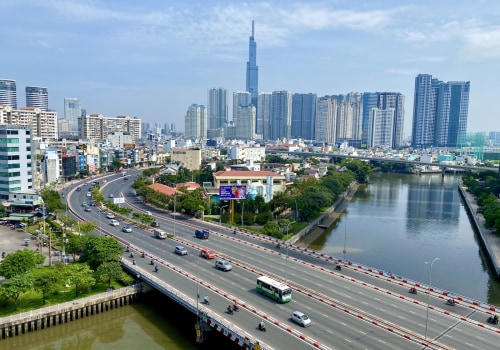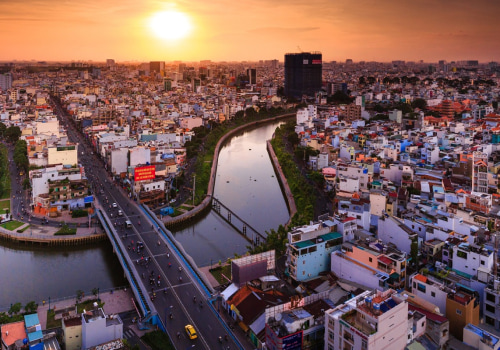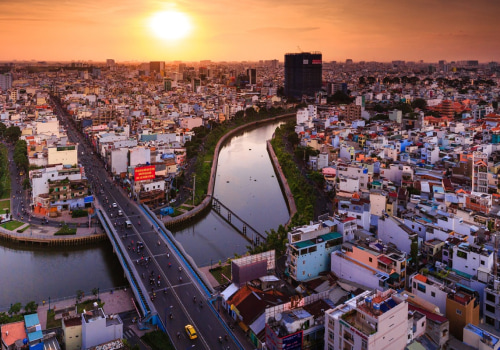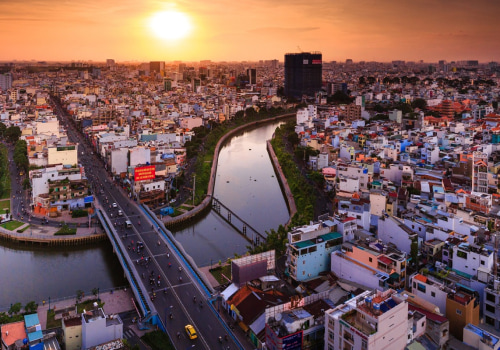In 1975, northern Vietnam won the war and changed the name of Saigon to Ho Chi Minh City, after the prime minister, a revolutionary leader of the communist party. The change of name was not voluntary on the part of those living in the South; it was a declaration of the success of the North. Our editors will review what you submitted and determine if they review the article.
Ho Chi Minh
City, Vietnamese Thanh Pho Ho Chi Minh, formerly Saigon (until 197), the largest city in Vietnam.It was the capital of the French protectorate of Cochinchina (1862-195) and of South Vietnam (1954-7). The city is located along the Saigon River (Song Sai Gon) north of the Mekong River Delta, about 50 miles (80 km) from the South China Sea. The shopping center of Cho Lon is located immediately west of Ho Chi Minh City. The area now occupied by Ho Chi Minh City was for a long time part of the kingdom of Cambodia.
The Vietnamese first entered the region in the 17th century. Relations with France began in the 18th century, when French merchants and missionaries settled in the area. In 1859, the city was captured by the French, and in 1862 it was ceded to France by the Vietnamese emperor Tu Duc. As the capital of Cochinchina, Saigon was transformed into an important port city and a metropolitan center of beautiful villas, imposing public buildings and tree-lined and well-paved boulevards.
Railway lines were built along the north and south of the city, and Saigon became the main collection point for the export of rice grown in the Mekong River Delta. Saigon was occupied by the Japanese in 1940, but French colonial authorities continued to administer Vietnam until 1945, when they were interned by the Japanese. Saigon was not greatly affected by World War II. After the Japanese surrender in 1945, the Viet Minh organization, under Ho Chi Minh, declared Vietnamese independence in Hanoi, but the celebrations in Saigon turned into riots.
French troops took control of the city and began the First Indochina (or French) War. The war ended in 1954 with a conference in Geneva, which divided Vietnam into northern and southern zones. The cultural and political life of Saigon, which became the capital of South Vietnam, was enriched and complicated by the influx of refugees from North Vietnam. Under communist control, Ho Chi Minh City lost its administrative functions and strenuous efforts were made to reduce its population and dependence on foreign imports and to nationalize its trading enterprises.
While many commercial firms closed or were interrupted after 1975, they started new ventures, with an emphasis on self-sufficiency. A state-owned craft company exports a wide range of products, including furniture, carpets, lacquered paintings and other works of art made largely with local materials. The other part is the story of the new name. Ho-Chi-Minh dates back to a particularly bitter period in Vietnamese history, the Vietnam War.
The name was deliberately chosen as a slap in the face to humiliate the South. The current name, Ho Chi Minh City, was given after reunification in 1976 to honor Ho Chi Minh. However, even today, the informal name of Sài Gòn remains in daily speech, both nationally and internationally, especially among the Vietnamese diaspora. Since Saigon is the old name, they might feel a little weird if someone were remembering the good times when Vietnam was a French colony.
Internet Service Providers (ISPs) operating in Ho Chi Minh City include Vietnam Data Communication Company (VDC), Corporation for Finance and Promoting Technology (FPT), Netnam Company, Saigon Post and Telecommunications Services Corporation (Saigon Postel Corporation, SPT) and Viettel Company. Of the nearly 3 million Vietnamese overseas, most left Vietnam as political refugees after 1975 as a result of the fall of Saigon and the consequent seizure of power by the communist regime, settling in North America, Western Europe and Australia. Since the time of the original Vietnamese settlement, the informal name of Sài Gòn has remained in daily speech; apart from official affairs, it remains the most common way of referring to the city within Vietnam, despite a change of official name after the end of the Vietnam War in 1975. Ho Chi Minh City is considered to be one of the most vulnerable cities to the effects of climate change, in particular floods. For the National Assembly of the Socialist Republic of Vietnam, sixth term, first session, for officially changing the name of Saigon-Gia Dinh City to Ho Chi Minh City.
However, most of the locals referred to it as Saigon instead of Ho Chi Minh (they noticed generational differences: the younger ones seemed to use Ho Chi Minh & Saigon interchangeably). Calling that city saigon is something like calling Tokyo by its old name Edo, calling Chennai Madras of India, calling the US state of Utah Deseret, calling New York New Amsterdam, calling the German city of Chemnitz Karl-Marx-Stadt, calling St. Petersburg Petrograd (or Stalingrad or Leningrad), calling Kaliningrad, Koenigsberg, etc. In 1976, following the establishment of the Unified Communist Socialist Republic of Vietnam, the city of Saigon (including Cholon), the province of Gia Ðnh and 2 suburban districts from two other nearby provinces were combined to create the city of Chi Minh in honor of the late communist leader HChi Minh.
When Vietnam was officially divided into North Vietnam (the Democratic Republic of Vietnam) and South Vietnam (the Republic of Vietnam), the southern government, led by President Ngô Đình Diệm, kept Saigon as its capital. On August 25, 1946, the South Center Department met in Gia Dinh, which is now Tran Nhat Duat Street, and Dr. Tran Huu Nghiep suggested using “Ho Chi Minh” as the new name of Saigon-Gia Dinh. Ho Chi Minh City (Saigon) is the financial and business center of Vietnam, with a prominent history dating back hundreds of years.
. .




